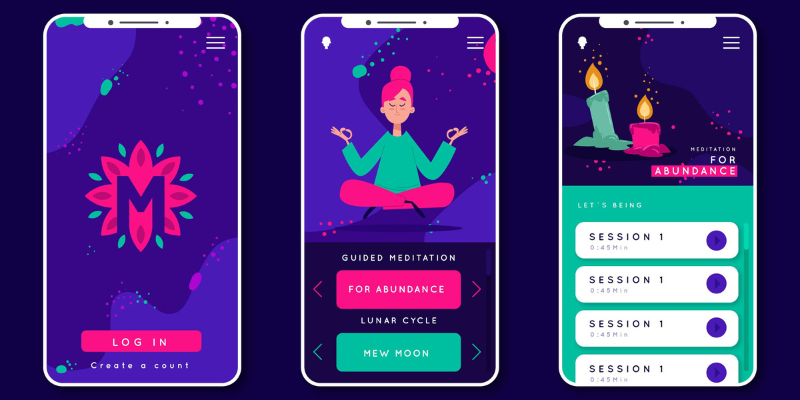
Astrology has seen a remarkable resurgence in recent years. From horoscope apps to detailed birth chart readings, people are turning to their smartphones to explore the world of astrology more than ever before.
However, while the astrology industry itself is booming, the success of astrology apps largely hinges on one critical factor: User Experience (UX) Design.
Whether it’s generating a birth chart, tracking astrological transits, or receiving personalized horoscopes, an app’s user experience directly impacts how users engage with the content, navigate features, and return for repeated use.
Simply put, a well-designed astrology app can foster trust, enhance usability, and create lasting user satisfaction. In this blog, we’ll explore how UX design plays a pivotal role in the success of astrology apps and why it’s a key element to consider for anyone looking to develop such an app.
In the crowded world of mobile applications, an intuitive, visually appealing, and easy-to-navigate user experience is what makes one app stand out over another. With astrology apps, this is especially crucial since users typically seek both personal insights and emotional connections through their astrological experiences.
You can connect with a leading Astrology App Development Company to effectively design your astrology app.
Well, currently, you can learn about the reasons why UX design is vital.
Let’s break down the specific ways UX design drives success for astrology apps:
Astrology can be a complex subject. The information presented—such as natal charts, planetary placements, moon cycles, and compatibility reports—can quickly overwhelm users if not presented in an intuitive manner. The goal of UX design in astrology apps is to simplify this information without losing its depth.
The ability to present detailed astrological data in a simple, visually appealing manner improves user satisfaction, which ultimately increases app retention.
Astrology apps typically offer a wide range of features, including personalized horoscopes, daily readings, compatibility reports, and chart analysis. A seamless navigation flow is crucial to ensure that users don’t get lost or frustrated while trying to explore these features.
By ensuring that the app’s flow is smooth and intuitive, users are more likely to return regularly for continued engagement.
Astrology apps thrive on offering personalized experiences—the more personalized the content, the more likely users are to connect emotionally and keep coming back. UX design helps create tailored experiences that feel individual to each user.
When users feel that the app understands their unique astrological profile, they’re more likely to engage with it on a deeper level, increasing retention rates and overall user satisfaction.
The emotional connection that users form with astrology apps is crucial. Astrology is not just about data—it's about the experience, the visual aesthetics, and the feeling of a deeper connection to the universe. Great UX design taps into this emotional appeal by creating an app environment that resonates with users.
Aesthetically pleasing designs coupled with engaging animations and transitions make users feel emotionally connected to the app, resulting in higher satisfaction and positive feedback.
Astrology apps often require personal data, such as birthdates and times, to provide accurate readings. Users are understandably cautious when sharing personal information, especially on mobile platforms. UX design plays a pivotal role in building trust by being transparent about how data is used and ensuring user privacy.
Trust is a vital element in ensuring users feel safe and confident while using the app, and UX design plays a central role in building that trust.
Even the most beautifully designed astrology app will fall short if it suffers from poor performance or slow load times. Users expect apps to load quickly and provide real-time updates, whether that’s a daily horoscope or a live astrological transit. Speed and performance are essential aspects of UX design.
By improving speed, load times, and the app’s responsiveness, UX design plays a key role in keeping users satisfied and engaged.
Accessibility is a crucial aspect of UX design. Astrology apps should be designed in a way that everyone, including those with disabilities, can access and navigate them easily.
By making the app accessible to a wider audience, UX design helps build inclusivity, broadening the app’s user base.
For those looking to build a custom astrology app, it might be a good idea to hire dedicated developers who specialize in UX design to help bring your vision to life and create an app that resonates with users on a deeper level.
The astrology app industry is growing rapidly, but for an app to truly stand out and succeed, it must prioritize UX design. From simplifying complex information to creating an aesthetically pleasing and emotionally resonant experience, UX design is what makes or breaks an astrology app. It ensures users not only engage with the app but also return to it again and again.
By focusing on user-centered design principles and prioritizing personalization, usability, and emotional appeal, you can create an app that stands out in the competitive market.